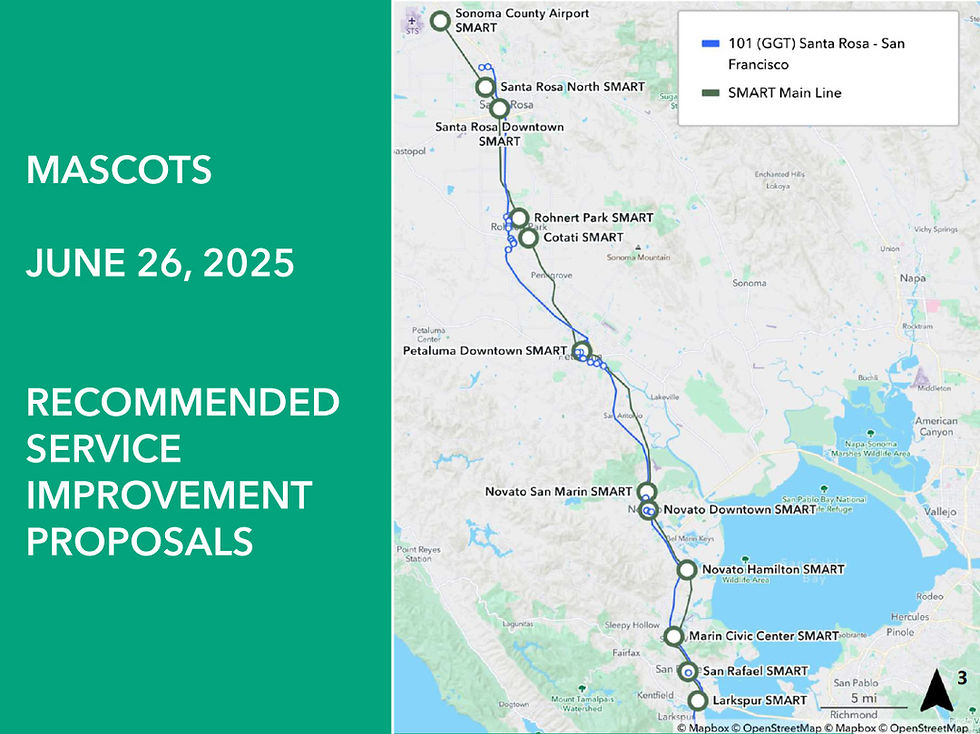Getting Marin on Track and Trail: The Seven Benefits of SMART
- Friends of Smart
- Dec 23, 2019
- 2 min read
by Walt Strakosch, Friends of SMART

For some time it has been clear that we cannot get around traffic problems simply by adding lanes to Highway 101. The $128 million project to close a 4.5-mile gap in the carpool lane between Lucky Drive and North San Pedro Road in San Rafael won’t end rush hour traffic congestion, according to its own environmental impact study. Greater congestion will arrive when widening of the “narrows” allows cars to arrive in Novato more speedily from Petaluma and points north. Future population growth will cause even more traffic to pour into Marin County.
The Sonoma Marin Area Rail Transit (SMART) District was created in part to provide ways around this problem. SMART riders and bike-pedestrian pathway users will be able to get to the Civic Center, San Rafael, and the Larkspur Ferry without getting stuck in traffic, and without bringing more cars and parking lots into downtown. Many businesses and public agencies will benefit because they can get and keep good employees. The entire system, with passenger equipment and track upgrades can be operational by 2011, if voters approve funding for the project in 2008.
The return of railroad service to the North Bay, and the bicycle pedestrian pathway will provide seven important benefits to the residents of Marin County:
Benefit One: Get Marin Employees to Work on Time
The SMART Train and Pathway provide reliable ways for workers to arrive at their jobs without undue stress. Passenger rail service reliably operates on time because it uses a separate right-of-way that is unaffected by traffic congestion. And the pathway serves both train riders and others. Since the SMART District owns the right of way, it can assure that passenger trains have priority over any freight operations and run on schedule. The 40 thousand people in census tracts within half-mile walking distance of proposed SMART stations can easily walk between train stations and any one of 40 thousand jobs according to ABAG studies. Bus, bicycle, shuttle, and ferry boat connections will give thousands of additional people a car-free option for getting to work.



Comments